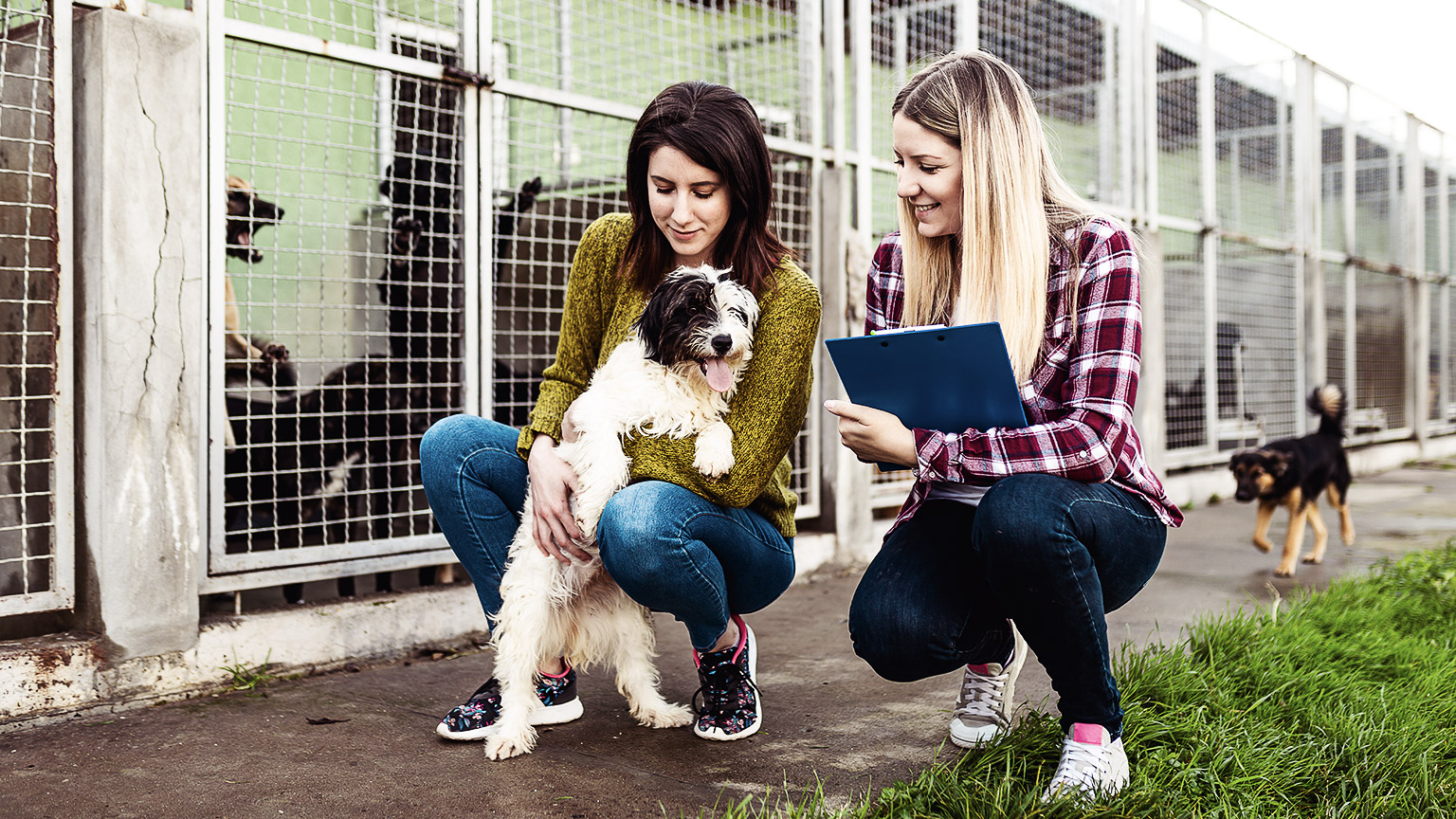Effective management of animals in any care facility requires precise documentation, thorough cleaning protocols, and secure storage of information. These practices form the foundation of high-quality animal care, ensuring both the well-being of the animals and the efficiency of the facility. Accurate record-keeping allows caregivers to monitor an animal's health, dietary needs, behavioural changes, and environmental conditions. By keeping up-to-date health records, feeding logs, and behavioural observations, caregivers can spot early signs of health issues, adapt care routines, and provide individualized attention to each animal.
Health records
- Record vital signs (weight, temperature, heart rate) regularly
- Document vaccinations, treatments, medications, and any veterinary visit
Feeding logs
- Track daily food and water intake, noting any changes in appetite
- Record the type, amount and time of feeding
Behavioural observation
- Note any changes in behaviour, such as aggression, lethargy and unusual action.
- Record interaction with other animals and how they respond to different stimuli
Breeding and reproduction
- Track breeding dates, mating behaviours, and expected birth dates
- Keep detailed records of pregnancies, births, and any complications
Environmental conditions
- Monitor and record the temperature, humidity, and cleanliness of the enclosure.
- Keep track of the cleaning schedule for bedding, enclosures, and other areas.
Maintaining a clean environment is crucial to preventing disease and creating a comfortable space for animals. Daily cleaning tasks, such as removing waste and disinfecting feeding bowls, coupled with deep cleaning every week, help to minimize the risk of infection and ensure a safe habitat for animals. Adhering to proper cleaning protocols not only promotes physical health but also reduces stress for the animals, which unsanitary or overcrowded environments can trigger. The use of non-toxic disinfectants and personal protective equipment ensures that cleaning is done safely and effectively.
Daily cleaning
- Remove leftover food and water, clean and refill bowls
- Spot clean enclosures and pens by removing waste, soiled bedding and dirty spots
Weekly deep cleaning
- Clean entire closures, including floors, walls and fixtures. Use animal-safe cleaning products.
- Disinfect feeding bowls, water vessels, toys and any other equipment.
Handling contaminated areas
- Use gloves and appropriate protective gear when handling waste or cleaning areas where animals may have been sick.
- Ensure proper ventilation and safe disposal of hazardous materials like soiled bedding, food waste or medical supplies.
Equally important is the secure and organised storage of information. Whether records are kept digitally or on paper, it is essential that all data be easily accessible, up-to-date, and protected. By implementing structured systems for storing health records, feeding logs, and cleaning schedules, caregivers can ensure that all relevant information is available when needed. In addition to maintaining legal compliance, this level of organization improves communication between staff members and provides a complete history of each animal’s care. Periodic audits help to keep records accurate and aligned with the best practices in animal welfare.
Digital store
- Use cloud-based systems or animal management software to store records. Ensure that all data is regularly backed up to prevent loss.
- Keep records organized by animal ID or species, with searchable categories for easy access.
Paper records
- If using paper records, store them in a safe, dry location such as a filing cabinet.
- Organize documents chronologically and by the animal, with clearly labelled folders.
Confidentiality and security
- Ensure that any sensitive information (e.g., medical records) is stored securely. Password-protect digital records and limit access to authorized personnel only.
- For paper records, lock filing cabinets and restrict physical access to essential staff.
Regular auditing
- Review and update records regularly. Ensure that outdated or inaccurate information is removed or archived.
- Conduct periodic audits to ensure data accuracy and that cleaning schedules and procedures are properly followed.

Recording information is an important part of your role as an animal carer. It allows you to share information with other staff members and raise concerns if you have any.
In many organisations, it is the responsibility of the veterinarian, manager or supervisor to record daily observations in the animal’s main file each day. However, your organisation may be different, so you will need to ensure that you are aware of the policies and procedures if you need to complete this recording task.
At the very least, you will be required to record basic observations around the feeding and watering of the animals.
Feeding and watering records

Recording what the animal was fed and when is important because it allows you to keep track of which animals have been fed. This may be especially important if there are many animals to be cared for or if there are multiple staff responsible for feeding them. Maintaining clear feeding records will help prevent animals from being skipped or accidentally fed twice.
The specific information required, as well as how you record it, will depend on your specific workplace. You may record it on the cage card, individual feeding plan, detailed file, daily noticeboard, or some other method. Simply follow the requirements of your workplace.
As discussed in the previous topic, there are eight (8) common things that you may need to observe and record about how a particular animal eats and drinks:
- The time you provided food and water
- The type of food (and fluid, if not water) you provided
- The amount of food and water you provided
- The amount of provided food and water that the animal consumed
- Whether the animal has difficulty obtaining the food, chewing or swallowing food and/or water
- Any patterns in eating habits and behaviours
- Variations or abnormalities relating to individual eating and drinking patterns, such as vomiting
- Whether the animal has defecated or urinated (as an indication of the animal processes nutrients).
The bottom section of the following cage card is one example of how feeding and watering may be recorded.
Ramona

| ABC All Animal Boarding | ||||||
|---|---|---|---|---|---|---|
| Animal name: Ramona
|
Owner name: Petrie Owner number: 0400 700 700 |
Species: Feline Breed: Devon Rex Age: 5 years Colour: Champagne |
Sex: Female Desexed: Yes Weight: 3.2 kg |
|||
| Stay | Feeding | Services | ||||
|
Date in: 08/07/2022 Date out: 20/07/2022 |
Product: Advance Adult Indoor Chicken (dry) Amount: 1/3 cup per day Frequency/timing: Morning Product: Advance Adult Indoor Turkey (wet) Amount: 1 packet per day Frequency/timing: Morning and evening |
Hydrobath - flea/tick: No Hydrobath - medicated: No Hand bath: No |
Clip (details): No Nail clip: Yes |
|||
| Vaccinations | Preventative health | Medication / supplements | ||||
|
Due date: 01/02/2023 Type: F5 |
Product: Revolution Spot On Due date: 13/07/2022 |
Product: PAW Digesticare Dose: 1/2 scoop daily Timing: Evening, on food |
||||
| Notes: | ||||||
| Date | Eat | Drink | Urine | Faeces | Medication | Notes: |
| 08/07/2022 pm | ✔ all | ✔ | ✔ | ✘ | ✔ PAW Digesticare | |
| 09/07/2022 am | ✔ most | ✔ | ✔ | ✔ | ||
| 09/07/2022 pm | ✔ all | ✔ | ✔ | ✔ | ✔ PAW Digesticare | |
Case Study

At Happy Paws Animal Care, Lily, a staff member, is responsible for feeding and watering a group of animals, including cows, goats, and alpacas. After distributing the food and ensuring that fresh water is available, she must complete the feeding and watering records for the day. The facility uses a digital record-keeping system, but they also maintain paper logs as a backup.
At the end of each feeding session, Lily carefully observes the animals to ensure they’ve eaten their portions and checks for any signs of refusal or reluctance to eat. For each animal, she enters the amount of food provided, the type of food (e.g., grains, hay, or specialized feed), and the time of feeding into the digital system. In the same system, she records water intake by checking and refilling water vessels, noting any changes in drinking habits or water consumption.
For example, today, one of the goats, Billy, didn’t finish his food, which Lily notes in the comments section. This behaviour will be monitored and flagged for the next few feedings to determine if there are any underlying health issues. Similarly, she notices that the cows seem to be drinking more water than usual due to the hot weather, which she documents to ensure the animals remain hydrated.
Once she completes the digital records, Lily also updates the paper log, providing a quick summary of the day's feeding and watering activities, along with any special observations. This ensures that there’s a physical backup of all important details in case the digital system is ever inaccessible.
Reflection
Based on the scenario above with Lily, why is it important to do the required tasks of recording information and data?
- Monitoring Health: Feeding and watering records help track any changes in an animal’s eating or drinking habits, which can be an early indicator of illness or stress.
- Ensuring Proper Nutrition: By maintaining accurate records, caregivers ensure that each animal receives the appropriate amount of food and water based on their specific needs.
- Accountability and Consistency: Documenting these processes creates a history that allows multiple staff members to provide consistent care, even during shift changes.
- Compliance: Accurate records may also be required for regulatory purposes, ensuring the facility meets animal welfare standards.
Eating and drinking behaviours
Kilograms (numeracy) As discussed in the previous topic, the eating and drinking behaviours of an animal may be an indication of their general health and well-being. For example, fussy eaters may become malnourished if they regularly refuse certain types of foods.
Changes in eating and drinking behaviours can sometimes be a sign that an animal is unwell. For example, suppose a dog that normally eats well suddenly refuses all dry food and bones. The concerned owner takes the dog to the veterinarian, who discovers the dog has damaged teeth.
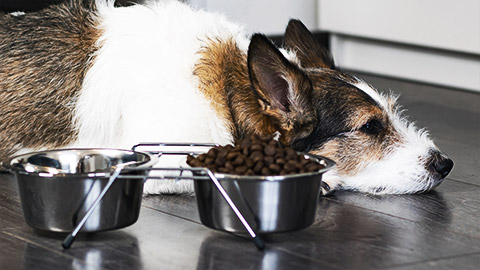
In order for you, as an animal carer, to notice a change in feeding and drinking behaviours, you must first learn the typical behaviours of the animals you care for. This is why it is important to record all eating and drinking behaviours, not just the unusual ones.
Unless you were familiar with the typical behaviour of that animal, you might not know if the dog from the previous scenario was refusing to eat dry food because it was used to wet food, it didn’t like that variety of dry food, it didn’t typically eat much at that time of day, or if there was something wrong with the animal.
If you do observe a change in usual behaviours, you must record the changed behaviour and inform your supervisor, who then may refer it to a veterinary practitioner.
You may be required to take detailed feeding observations on some animals, such as those recovering from surgery or with severe health problems. These detailed observations may include removing and accurately weighing or measuring any food remaining from the previous feed and using that information to calculate the amount of food (or water) consumed.
Serious feeding abnormalities
Serious abnormalities in feeding behaviours should be recorded and reported as soon as possible.
Serious eating and drinking abnormalities may include:
- Changes in feeding behaviours:
- Gorging
- Increased water intake
- Reluctance to eat
- Reluctance to eat previously accepted feedstuffs
- Hoarding or hiding food
- Difficulty eating, such as difficulty swallowing, chewing, or acquiring food.
- General observation of sick animals including:
- Rapid weight loss
- Vomiting or regurgitation
- Bloating
- Changes to faeces consistency, colour or amount.
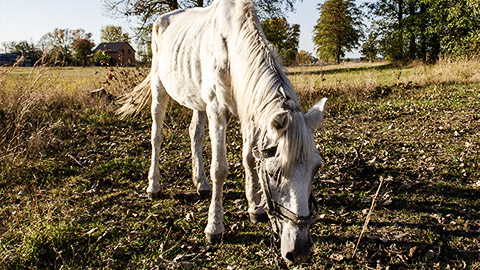
Case Study
A few days after her initial observations, Lily is tasked with reviewing the feeding and drinking behaviours of the animals at Happy Paws Animal Care. As part of her regular duties, she checks the records she had entered earlier in the week, particularly focusing on Billy, the goat, who had shown a reduced appetite. Lily’s digital log shows that Billy hadn’t been finishing his meals for the past three days, and she recalls noting that he had seemed less energetic during the previous feedings.
Today, Lily decides to observe Billy more closely during feeding time. She notices that while the other goats eagerly approach their food, Billy lags behind and only picks at his meal. She also compares his water intake to the rest of the herd, finding that he’s drinking less than usual, a potential sign of dehydration or discomfort. Based on these observations and the trend in her feeding logs, Lily becomes concerned that there may be an underlying health issue.
Lily reviews the feeding and watering records not just for Billy but for all the animals, ensuring she looks for any other outliers. She notes that the cows, who had been drinking more water due to the hot weather, have now returned to their normal drinking habits, indicating that they are adjusting well. For the alpacas, the records show no significant changes, with consistent food and water consumption patterns.
Recognising the potential health risk to Billy, Lily promptly reports her findings to the facility manager and schedules a health check with the onsite veterinarian. The review of records and direct observations enables her to make informed decisions about the well-being of the animals, ensuring any concerning behaviours are addressed early.
Reflection
Why Reviewing Feeding and Drinking Behaviours is Important:
- Early Detection of Health Problems: Regular review of feeding and drinking records allows caregivers like Lily to spot any patterns of reduced intake, which may indicate illness, stress, or discomfort in an animal. In Billy’s case, the early signs of reduced appetite led to a health check that could prevent the issue from worsening.
- Tracking Changes Over Time: Monitoring these behaviours over a period of time provides insight into whether certain behaviours are temporary (due to environmental factors, like weather) or persistent, which could signal a chronic issue.
- Tailoring Care: Reviewing records helps caregivers adjust feeding routines or dietary needs based on an animal’s changing health status, age, or environmental conditions. For example, adjusting water provision during hot weather ensures animals remain hydrated.
- Maintaining Animal Welfare: Regular review of feeding and drinking habits ensures that all animals are receiving the necessary nutrition and hydration, promoting their overall health and well-being.
Change in faeces often follows a change in eating habits
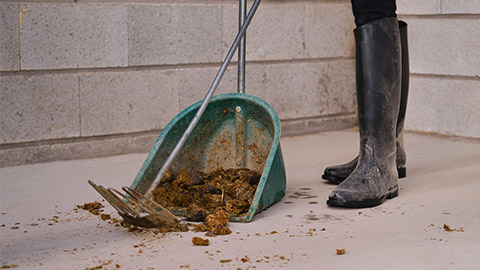
The amount, colour and consistency of animal faeces is often a very good indicator of the animal’s health. A sudden change in an animal’s faeces can let you know that something is going on with that animal.
The faeces of different animals look different. So, there is no single characteristic to look for in all animals. However, ‘poo charts’ can be useful to refer to when you are unfamiliar with a particular anima’s faeces. Have a look at Oxbow Animal Health's example of a guinea pig and rabbit faecal chart in their article, 'The Scoop on Small Pet Poop: Normal, Abnormal, and Everything in Between'.
Case Study
Following her initial review of Billy's feeding behaviour at Happy Paws Animal Care, Lily continues to monitor his condition closely. After noticing that Billy has been eating less and drinking sparingly, she begins observing another important factor: his faeces. Over the next few days, Lily notices that Billy's droppings are smaller, drier, and less frequent than usual. This change is likely a direct result of his reduced food and water intake.
Lily knows that changes in an animal's faeces often follow shifts in their eating habits, which can signal digestive issues or more serious health problems. She carefully documents her observations in the facility’s log, noting the change in Billy’s faeces alongside his diminished appetite and reduced water consumption.
Understanding that these symptoms are interconnected, Lily decides to report her findings to the on-site veterinarian, who performs an examination. The vet explains that digestive changes often occur when an animal isn’t consuming enough food or water, which can lead to constipation, dehydration, or even more serious gastrointestinal issues. The vet also recommends checking for any dental issues that could make it difficult for Billy to eat comfortably.
While waiting for the vet’s assessment, Lily ensures that Billy is kept under close observation, and she follows the vet's advice to offer him softer, more easily digestible food, as well as providing extra hydration to help restore normal digestive function.
Reflection
Why Monitoring Faeces is Important After Changes in Eating Habits:
- Digestive Health Indicators: Faeces are a direct reflection of an animal’s digestive health. Changes in size, consistency, or frequency often follow shifts in eating and drinking behaviour. In Billy's case, the smaller and drier faeces indicated a potential issue caused by his reduced intake of food and water.
- Early Intervention: By connecting the changes in faeces with Billy’s reduced appetite, Lily is able to flag potential digestive issues early, preventing them from becoming more serious. Monitoring faeces is a simple yet crucial step in identifying health problems before they worsen.
- Comprehensive Health Monitoring: Observing not only food and water intake but also the resulting faeces provides a more complete picture of an animal’s health. In Billy’s case, the faecal changes, paired with his other symptoms, were critical in diagnosing his issue.
- Adjusting Care: Recognizing that dietary changes affect digestion allows caregivers to adapt their feeding practices, such as offering softer food or more water, to improve an animal's condition and prevent further health decline.
Lily's careful tracking of Billy's feeding, drinking, and faecal changes demonstrates the importance of a holistic approach to animal care. By addressing these interconnected factors, she ensures that Billy gets the care and treatment needed to restore his health.
Knowledge Check 8
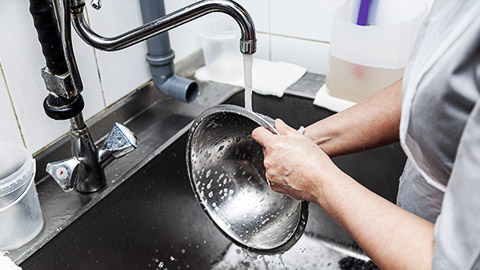
Pack up and clean up
Now that you have fed, watered and observed the animals, it is time to pack up and clean up. It is extremely important to maintain the highest level of hygiene and to clean and store all feeding equipment correctly.
Storage requirements for animal food
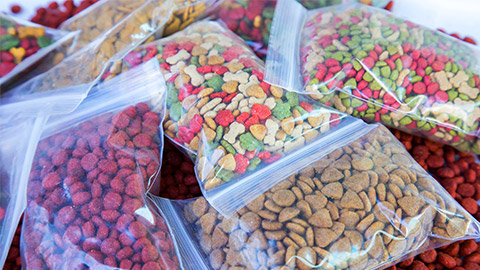
Storing food in an animal care facility is equally important to storing food in a human care facility. It is important that you understand that incorrect storage of food can cause spoilage and food poisoning.
The following are a few key things to remember when storing animal foods:
- Food should only be stored in areas that are designed for that purpose. This includes food stored in refrigerators, freezers, cool rooms, dry stores, transport vans and refrigerated vans.
- High-risk food should be kept at or below 5°C or above 60°C to avoid the ‘temperature danger zone’, where bacteria multiply fastest.
- Do not refreeze food that has already been frozen and thawed.
- You should always store raw food separately from cooked food.
- Store foods in the original packaging, if possible, with an airtight covering if necessary or in a clearly labelled, airtight container to protect the food from contamination, such as pests and mould.
- Where food containers are used, ensure they are food grade and not damaged.
- Check the use-by and best-before dates:
- Dispose of any food at or past its use-by date.
- Follow your workplace procedure for foods at or past their best before date. You may need to use that food within a specified period or throw it away.
Case Study

At Happy Paws Animal Care, Mark, a staff member, is responsible for preparing and storing the daily meals for the facility’s animals, which include dogs, cats, and reptiles. After preparing the animals’ food in the morning, Mark ensures that any unused portions are properly stored for later feedings.
For the dogs and cats, Mark prepares dry kibble and wet food meals. The dry kibble is measured into individual portions for each animal, and any extra is kept in large, airtight containers to maintain freshness and prevent pests from contaminating the food. The wet food, which spoils more quickly, is divided into smaller, daily portions and placed in labelled resealable containers. These containers are stored in a refrigerator dedicated solely to animal food, ensuring that it stays fresh and uncontaminated by external bacteria. Each container is clearly marked with the date it was prepared, ensuring that food is used in the correct order, following the “first-in, first-out” method to minimize waste.
In the reptile section, Mark prepares a variety of fresh fruits, vegetables, and insects. Any leftover fruits and vegetables are stored in sealed containers and refrigerated to prevent spoilage. Mark keeps the insects that live in a separate storage area specifically designed for live feed, maintaining the right temperature and humidity levels to ensure they remain healthy and nutritious for the reptiles.
After feeding the animals, Mark cleans all feeding tools and containers to prevent cross-contamination. He then returns all food items to their designated storage areas, ensuring the facility’s food safety protocols are followed.
Storing food in appropriate conditions and containers

All dry food, such as pellets, bird seed and hay, should be stored at room temperature (25°C or less) in a clean, dry, sheltered area. Open bags of dry food and small amounts of loose hay should be stored in an airtight container for the following reasons:
- This is to ensure the food stays fresh; otherwise, it can spoil or go stale.
- To keep the food dry and prevent it from becoming contaminated by moulds and mildew.
- To prevent pests, such as rodents or insects, from eating or contaminating the food.
Any packaged dry foods, such as pellets or bird seed, must be disposed of once they reach their use-by dates, even if they are unopened.
Unopened wet food should be stored at room temperature in a clean, sheltered area until opened. Open cans and packets of wet food must be:
- covered with an airtight lid or placed into an airtight container
- labelled with the date it was opened
- refrigerated.
To prevent food poisoning, you must throw away any uneaten wet food three days after opening.
Uncut fresh fruit and vegetables can be either stored at room temperature in a secure, clean container out of direct sunlight or refrigerated. Fruit and vegetables can remain fresh for several days. Cut fruit and vegetables should be stored in an airtight container in the refrigerator.
Airtight containers prevent wet food from becoming contaminated by bacteria, fungi and other pathogens. The low temperature inside a refrigerator or freezer significantly slows down the growth of any bacteria that is naturally present in the food and reduces the risk of food poisoning.
Watch
The following video (1:14 mins) contains a couple of important tips for storing horse feed appropriately.
Bacterial contamination
Bacterial contamination is a very common cause of food poisoning. When cleaning food preparation surfaces and equipment and storing animal foods, it is critical to understand the main causes of bacterial contamination and how to prevent them. In food handling industries, the acronym FAT TOM is used to help remind staff about preventing bacterial contamination. Select each of the following headings to learn more about the six most common causes of food contamination and how to prevent them (Unilever Food Solutions, n.d.).
Food that is particularly high in protein (such as beef, chicken or fish) or carbohydrates (such as pasta or rice) serves as a breeding ground for bacteria. Therefore, it is important to know the type of animal food that is being used in the workplace and its nutrient makeup.
Bacteria are usually killed by acidic environments. Conversely, bacteria thrive in foods that have low acidity (such as chicken, fish and eggs).
Bacteria grow fastest in temperatures between 5°C and 55°C. As a result, this temperature range is often referred to as the temperature danger zone (TDZ). To prevent contamination:
- store food below 5°C
- cook it at temperatures higher than 55°C.
Following on from the previous point, risky foods should not be left in the TDZ for more than 4 hours because many microorganisms start to produce toxins after this period of time.
Most microorganisms need oxygen to grow and reproduce. Covering food or sealing it in airtight containers helps reduce the amount of oxygen available.
Microorganisms, such as meats, eggs, and cooked foods, tend to grow and reproduce more quickly in moist environments. So, it is important to store moist foods in airtight containers and at low temperatures.
Use by and best-before dates.
Check for use by and best-before dates on any open foods. Check to see if your workplace has a disposal policy for foods past their best-before date. If so, follow the procedure. If not, try to use up foods at their best before dates as soon as possible.
Dispose of any open food at or past the use-by date.
When you restock food items, check the use-by and best-before dates. Ensure the items are closest to their expiration dates and are closest to the front of the shelf. That way, those items will be opened and used up before those with a more distant expiration date.
Changing the physical position of food items according to their use by or best before date is called stock rotation. For food items that do not have a use-by for best-before date, such as hay or fresh fruit and vegetables, rotate stock using the first in, first out (FIFO) principle. This means that newly purchased items should be placed at the back, while older items are moved to the front to ensure they get used first. Stock rotation minimises waste by helping make sure food is used before it goes out of date or spoils.
Case Study
At Happy Paws Animal Care, Mark is not only responsible for preparing and storing animal food but also for ensuring that it is kept free from bacterial contamination and used before it expires. As part of his routine, Mark strictly adheres to the facility’s food safety protocols to ensure that every meal he prepares remains safe for consumption.
After preparing meals, Mark ensures that food intended for later use is properly stored in airtight containers to minimize exposure to air, moisture, or contaminants that could lead to bacterial growth. For perishable items, such as wet dog and cat food, fresh produce, and raw meat, Mark checks each item’s use-by date before storing it in the refrigerator. Any food that is close to expiration is placed at the front of the shelf, following the “first-in, first-out” method, so that it’s used before newer stock.
Managing Use-by Dates:
Each week, Mark and the other staff conduct an inventory of the food stored in both the pantry and the fridge. They carefully check the use-by dates of all perishable items, discarding anything that has expired to avoid the risk of feeding spoiled food to the animals. For dry food like kibble, which has a longer shelf life, Mark monitors the packaging’s “best before” dates and ensures that any nearing its expiration is fed first. This process ensures the food retains its nutritional value and freshness.
Preventing Bacterial Contamination:
Mark is aware that improper storage or handling of food can lead to bacterial contamination, which poses serious health risks to the animals. He follows these essential steps to prevent contamination:
Refrigeration at Correct Temperatures: Perishable items such as wet food, raw meat, and fresh produce are stored in the refrigerator at a temperature of 4°C (39°F) or lower. Mark ensures that the refrigerator is routinely checked to confirm it’s functioning properly, and he places a thermometer inside to monitor the temperature.
Separation of Raw and Cooked Foods: To avoid cross-contamination, Mark keeps raw meats and fresh produce stored separately from dry foods or cooked items. Raw meat, which poses the highest risk for bacterial contamination like Salmonella or E. coli, is kept in leak-proof containers on the bottom shelf of the fridge so it doesn’t drip onto other foods.
Cleaning and Sanitizing: After handling raw meat or preparing fresh meals, Mark cleans all utensils, bowls, and cutting surfaces thoroughly with animal-safe disinfectants. He also sanitizes his hands before handling other food to reduce the risk of transferring bacteria. Additionally, food storage containers are washed and disinfected between uses.
Regular Inspections: As part of food safety management, Mark and the team regularly inspect the storage areas for signs of spoilage or contamination, such as unusual odours, discolouration, or mould. This ensures that compromised food is identified and discarded before it can be given to the animals.
Handling Expired Food:
In cases where some food has passed its use-by date, Mark immediately discards it in a safe and hygienic manner. Expired or spoiled food is placed in sealed trash bags and disposed of in a dedicated waste bin located outside the facility to prevent any animals or pests from accessing it. The bin is emptied regularly to maintain cleanliness and hygiene around the storage area.
Maintain a clean food preparation area
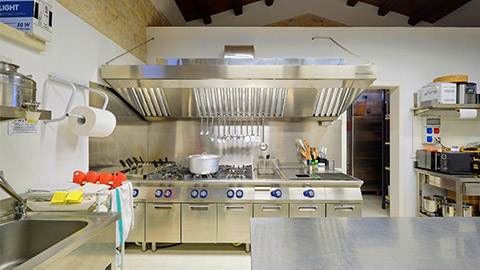
All feeding equipment is to be:
- Cleaned with a scrubbing brush in hot water with dishwashing detergent or an appropriate hospital-grade cleaning agent.
- Dry with a cloth or paper towel or allow to air dry. Before putting any feeding equipment away, you must ensure that it is completely dry and free from contaminants.
- Stored in a cupboard protected from anything that can contaminate them, such as dust, dirt, splashed water or urination.
Ensure that all food preparation and storage surfaces, such as benches, walls, floors, ceilings and shelving, are thoroughly cleaned with an appropriate cleaning product as well.
Dispose of any used gloves.
Safe use of chemicals and cleaning agents
It is essential that you keep your work areas clean at all times to prevent contamination and the growth of bacteria and to eliminate any slipping hazards.
Make sure all work surfaces, materials, equipment and instruments are cleaned, disinfected and sterilised, where required, in accordance with infection control guidelines. This will help prevent the transmission of zoonotic pathogens. All chemicals and cleaning agents should be handled correctly, using the correct PPE. Manufacturer instructions should be followed when mixing or handling chemicals.
Animal droppings as hazardous waste
In an animal care facility, hygiene is very important. When you attend your animal care facility, ensure you understand the protocols and regulations relating to hazardous waste disposal. Disposal of waste requirements may include disposal in accordance with the following:
- Environmental protection (waste management) policies and regulations
- Australian and New Zealand standards.
A common example of hazardous waste in animal care facilities is the fecal waste of animals. Animal droppings harbour disease-causing organisms such as bacteria and worms. The clean-up of animal droppings is important for infection control and for the overall well-being of the animals. The longer droppings are left on the ground, the more likely it is for cross-contamination with feeding surfaces or spreading infectious diseases between animals. For this reason, animal droppings should be cleaned up as soon as possible and must be disposed of correctly.
Correct disposal of animal faeces
When feeding the animal, you need to ensure the food and water are not contaminated, such as by the animal walking their own faeces through their food. It is your responsibility to collect and dispose of animal faeces. Disposal of animal faeces should occur per your organisation’s policies and procedures and local and state council requirements. Animal waste should not go in the ‘normal’ bin in an animal care facility.
Some animal care settings, with many animals, require an animal waste disposal tank or container. They are typically placed in a convenient location in the facility and generally have a foot-operated lid to make them easy and hygienic to use. Animal waste containers come in various sizes to suit different types, sizes and numbers of animals.
Most cats in an animal care facility will use a litter tray. You can collect the solid matter and dispose of it while leaving the uncontaminated litter in the tray.
Contaminated cat litter needs some consideration. Many facilities use biodegradable litter. This type of litter breaks down easily. Dispose of contaminated litter according to your workplace policies and procedures.
When collecting and disponing animal faeces, remember to wear appropriate PPE.
Case Study

At Happy Paws Animal Care, Sarah, a staff member, is responsible for ensuring that the facility’s food preparation area is kept clean and sanitary, as well as properly handling the disposal of animal faeces. After feeding the animals, Sarah begins her routine of cleaning the food prep area to prevent any cross-contamination and to ensure the safety of the animals.
Maintaining the Food Preparation Area:
Once the morning feedings are complete, Sarah starts by clearing the countertops and washing all food bowls and utensils. She rinses each item under hot water, scrubbing away food residue with animal-safe dish soap. After thoroughly rinsing and drying the bowls, she stores them in a clean, dry cabinet to prevent contamination before the next feeding.
Next, Sarah wipes down all surfaces in the food prep area, including countertops, chopping boards, and feeding stations. She uses a disinfectant spray that is specifically approved for use around animals. Sarah knows that using the wrong chemicals could harm the animals, so she always chooses products that are non-toxic and free from harsh fumes. After spraying the surfaces, she allows the disinfectant to sit for a few minutes, ensuring that it kills any lingering bacteria before wiping the surfaces clean with a fresh cloth.
Sarah finishes by sweeping and mopping the floor of the prep area, paying extra attention to any spots where food may have spilled. She uses a diluted cleaning solution that is both effective against germs and safe for animals. The cleaning solution is clearly labelled, and Sarah follows the facility’s safety protocols, wearing gloves and ensuring proper ventilation while she works.
Using Chemicals to Clean:
Sarah knows that the use of cleaning chemicals must be carefully managed to ensure the health and safety of the animals. Before applying any chemical cleaners, she checks the product label to verify that it is safe for animal use. She stores all cleaning chemicals in a secure cabinet, away from any food storage areas, to prevent accidental exposure.
She follows the manufacturer’s instructions when diluting the cleaning products and uses designated cleaning cloths and tools for the food prep area, ensuring that these are not used elsewhere to avoid cross-contamination. After cleaning, she rinses surfaces that come into contact with food to ensure that no chemical residue remains.
Disposal of Animal Faeces:
Once the food prep area is clean, Sarah moves on to clean the animal enclosures and properly dispose of any faeces. She uses gloves and a scooper to pick up the faeces from the enclosures of the dogs, cats, and reptiles. The faeces are immediately placed into a biodegradable bag and sealed tightly.
Sarah knows that proper disposal of animal waste is critical to prevent the spread of diseases and maintain a sanitary environment. She places the sealed waste bags into designated waste bins that are located away from the food prep area and the animal enclosures. The waste bins are emptied regularly by a waste disposal service to ensure they do not become a breeding ground for bacteria or pests.
After disposing of the faeces, Sarah disinfects any tools she uses during the process and sanitizes her hands to prevent the spread of germs to other areas of the facility. She also checks the enclosures to ensure that no faecal residue remains and sprays a mild disinfectant to keep the enclosures fresh and clean.
Record food and food supplement stock levels and report to the supervisor
All food packaging and supplements that are opened for an animal must be recorded. Some organisations will have a computerised stock management system that will help you record the addition or removal of stock. Other organisations will have manual stock inventory sheets.
Regardless of the type of system, all organisations will track the level of stock on hand. A food and supplement stock inventory tells you:
- The reorder level for each item
- Where stock has been issued by the department
- The value of stock that has been issued
- The value of the stock on hand
- The maximum amount of each item that can be ordered at any time
- When that stock was issued.
It is common for a manual system to be physically located with the stock items. As with any aspect of stock control, the speed of noting stock movement and accuracy in recording its movement is essential. This means that the stock movement should be recorded as and when it happens. It is not acceptable to record stock movement only once every week or month.
Maintaining food stock inventories
How do the records assist you in making sure that stock levels are maintained? Records are essential so that consistency in figures can be maintained and any discrepancies can be sourced and evaluated.
When maintaining stock levels in your organisation, consideration needs to be given to a number of factors, such as:
- What is the ideal level of stock for the product?
- How much space is available for stock storage?
- How often the stock is reordered, in other words, what is the reorder cycle?
- Is it easy to adjust stock levels without suffering loss?
- What is the demand for the product?
- What is the availability of supply?
The basic assumption behind maintaining optimum stock levels is to avoid an ‘out of stock’ situation where a food item or supplement is unavailable for an animal that requires it. However, storage space may be limited, and some food items have relatively short expiry dates. So, it is a fine balance to make sure there is enough stock on hand to properly feed the animals without having so much stock that some of it goes out of date before it can be used.
Many animal care facilities will set a numerical minimum and maximum and reorder stock levels for items.
- The minimum level is the absolute smallest amount of food or supplement items that can be on hand.
- The maximum level is the most of any item that is to be in storage at any time, regardless of any deals that may be available from suppliers and regardless of other factors (such as possible impending strikes and supply shortages).
- The reorder level is the set level stock must fall to before new stock can be ordered. This reorder level (and reorder quantity) removes discretion from ordering and guarantees food or supplement items won’t run out.
It is important that once you recognise that the stock on hand is at a reordering level, you alert your manager or supervisor, who will then order more stock. If at any point you are unsure about stock ordering or any procedures that your organisation has regarding stock, seek assistance from your supervisor or manager.
Food stock record sheet
The following table is an example of a basic manual food and supplement stock inventory.
| Date | Item description | Quantity on hand | Expiry date | Reorder | Signature |
|---|---|---|---|---|---|
| DD/MM/YY | The specific name of the product | The exact number of unopened items | Specific use by or best before date | Refer to the reorder level for that item and indicate whether it has been reached | Your name |
| 22/07/22 | Supercoat Chicken Large Breed Adult Dog Food – 18 kg | 16 | Use by 10/2023 | No | Jane Smith |
| 22/07/22 | Petz Park Probiotic for Dogs – 180 scoops | 2 | Use by 02/2022 | Yes | Jane Smith |
Knowledge Check 9
Complete the following two (2) tasks. Click the arrows to navigate between the tasks.
Well done! You have now completed the theory for this module. You should now have the skills and knowledge required to prepare, distribute and store food and water for animals safely and appropriately, according to animal dietary needs and workplace requirements.
The key concepts from this module include how to:
- Understand and correctly interpret feeding plans to:
- Confirm the animals to be fed
- Identify and prepare required foods and supplements.
- Provide food, water and supplements to the animal according to their feeding plan in a manner that is safe for you and the animal
- Monitor animals to ensure they are feeding effectively and to identify and report any changes to feeding behaviours
- Clean and store food preparation areas and equipment to maintain safety and hygiene
- Record food and supplement stock inventories and report them as required.
The following links may be helpful to extend your knowledge or support your interest in the care of animals.
- It may seem a simple task to weigh an animal. However, not all animals will sit on a scale by themselves or sit still long enough to obtain an accurate weight. The video, How to Weigh Your Rabbit (2:35 min), shows some handy tricks. This technique would apply to a variety of animals.
- The Captive Reptile and Amphibian Husbandry Code of Practice (pdf) from the Queensland Government provided detailed information regarding the feeding and watering of a range of common captive reptiles and amphibians.
